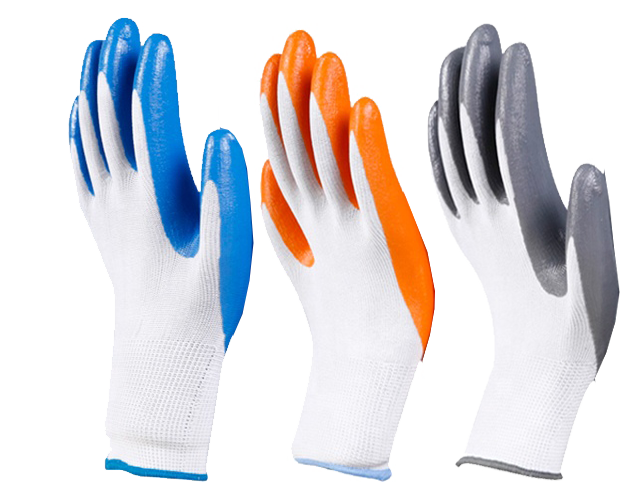Methods for Solving Discoloration of Protective Gloves
Protective gloves are essential in various industries to safeguard workers from potential hazards. However, over time, these gloves may experience discoloration, which can be caused by factors such as exposure to chemicals, sunlight, or wear and tear. Here are two effective methods for solving discoloration issues in protective gloves:
1. Regular Cleaning and Maintenance:
Gentle Cleaning Agents: One common cause of discoloration is the accumulation of dirt, grime, or chemicals on the surface of the gloves. Regularly clean the gloves using mild, non-abrasive cleaning agents. Ensure that the cleaning agents used are compatible with the material of the gloves.

Proper Drying: After cleaning, allow the gloves to dry thoroughly in a shaded area. Avoid exposing them to direct sunlight, as prolonged sunlight exposure can contribute to discoloration. Proper drying helps maintain the integrity of the glove material and prevents residual cleaning agents from causing color changes.
Storage Practices: Store gloves properly in a clean and dry environment. Avoid placing them in direct contact with surfaces that may transfer colors or cause staining. Adequate storage prevents unnecessary exposure to elements that can contribute to discoloration.
2. UV Protection and Sunscreen:
UV-Resistant Coatings: Discoloration of protective gloves, especially those used outdoors, can be attributed to UV radiation. Consider using gloves with UV-resistant coatings or treatments. These coatings provide an additional layer of protection against the harmful effects of sunlight.
Sunscreen Application: Another preventive measure is applying sunscreen to the gloves. Sunscreen acts as a barrier against UV rays, helping to reduce the impact of sunlight on the gloves' color. Ensure that the sunscreen used is compatible with the glove material and does not cause adverse reactions.
Rotate Glove Usage: If possible, rotate the use of gloves to minimize prolonged exposure to sunhttps://www.gmglove.com/news/338.htmllight. This practice allows gloves to have time for recovery and reduces the likelihood of discoloration due to extended outdoor use.
Key Considerations:
Material Compatibility: When selecting cleaning agents, drying methods, and UV protection measures, consider the compatibility with the material of the protective gloves. Certain materials may react differently to cleaning agents or UV exposure.
Manufacturer Guidelines: Adhere to the manufacturer's guidelines regarding cleaning, maintenance, and storage. Manufacturers often provide specific instructions to help users prolong the lifespan of protective gloves and minimize discoloration.
Replace Worn-Out Gloves: If discoloration persists despite preventive measures, consider replacing the gloves. Worn-out gloves may not provide the necessary protection, and discoloration could be an indicator of decreased material integrity.
In conclusion, maintaining the appearance and functionality of protective gloves requires proactive measures. Regular cleaning, proper storage, and UV protection can significantly contribute to preventing and solving discoloration issues. Implementing these methods ensures that protective gloves remain effective, durable, and visually appealing in demanding work environments.


